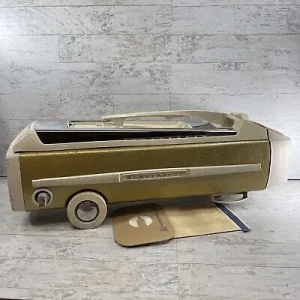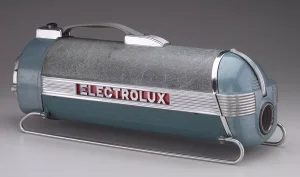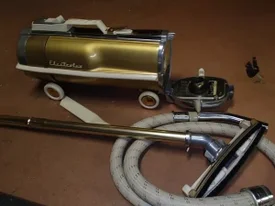Unveiling the Unfamiliar: Can You Guess What This Is? Challenge Accepted!
Change is an undeniable force in life, and as time unfolds, we witness transformations in various aspects. Whether in people, technology, or situations, evolution is constant and inevitable. Reflecting on one’s own journey reveals the profound impact of change, particularly in technological advancements.

Considering the rapid pace of technological evolution, looking back can evoke a mix of awe and nostalgia. One intriguing artifact from the past challenges us to discern its purpose. Transporting us to the 1930s, this enigmatic contraption, resembling a flask or carrier, might puzzle contemporary observers. If you’re unfamiliar, fear not, for unless you were part of that era, decoding its identity proves a daunting task.

Enter the Hercules Vacuum cleaner, a relic of innovation and luxury. Picture this odd-looking apparatus adorned in crocodile skin, a chic design that made it a symbol of sophistication during its time. Notably, it graced households amid the Great Depression, a period of economic hardship for many. The Hercules Vacuum’s extravagant features and cost reflected a stark contrast to the financial struggles of numerous families during that era.

Compared to the streamlined efficiency of modern vacuum cleaners, witnessing the Hercules Vacuum’s antiquated charm prompts contemplation on the leaps technology has taken. While today’s automated devices effortlessly sweep our floors, the Hercules Vacuum stood as a testament to an era where such innovations were groundbreaking.

As history unfolds, we learn that the humble broom underwent refinement in 1797, driven by a farmer’s quest for efficiency. The evolution continued, culminating in Daniel Hess’s 1860 invention of the first real vacuum cleaner. Despite initial challenges, vacuum cleaner designs persisted, with James Murray Spangler’s contributions proving revolutionary.
A janitor from Canton, Ohio, Spangler, at 60, dedicated himself to perfecting a portable, upright vacuum cleaner. His creation, patented in 1907, marked a turning point. It utilized a ceiling fan motor and paddle blades to create airflow, employing a rotating brush for effective cleaning. Spangler’s invention laid the foundation for the Electric Suction Sweeper Company, shaping the future of household cleaning devices.
Amid financial struggles, Spangler’s creation found a new home when he sold the company to his cousin, Susan Hoover. Thus, the iconic Hoover brand emerged, a name synonymous with vacuum cleaners that endure to this day. This journey through the evolution of cleaning technology unveils the transformative power of innovation and the legacy left by inventors like James Murray Spangler.

